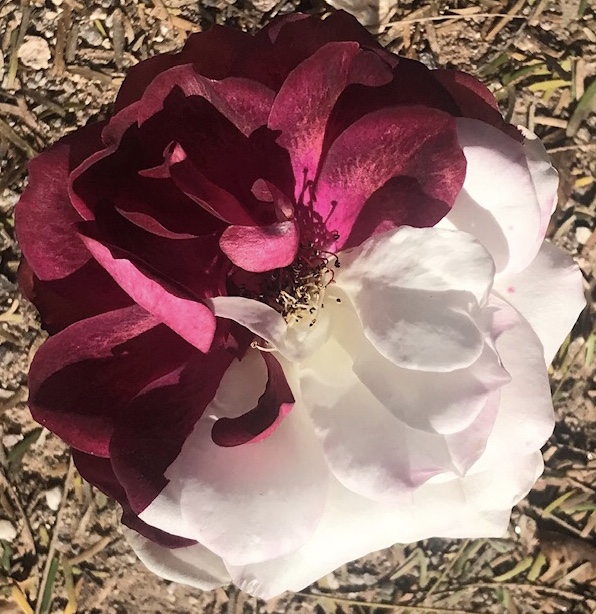|
Chimaerism
A genetic chimerism or chimera ( ) is a single organism composed of cells with more than one distinct genotype. In animals, this means an individual derived from two or more zygotes, which can include possessing blood cells of different blood types, subtle variations in form (phenotype) and, if the zygotes were of differing sexes, then even the possession of both female and male sex organs. Animal chimeras are produced by the merger of two (or more) embryos. In plant chimeras, however, the distinct types of tissue may originate from the same zygote, and the difference is often due to mutation during ordinary cell division. Normally, genetic chimerism is not visible on casual inspection; however, it has been detected in the course of proving parentage. Another way that chimerism can occur in animals is by organ transplantation, giving one individual tissues that developed from a different genome. For example, transplantation of bone marrow often determines the recipient's ensuing ... [...More Info...] [...Related Items...] OR: [Wikipedia] [Google] [Baidu] |
Organism
In biology, an organism () is any life, living system that functions as an individual entity. All organisms are composed of cells (cell theory). Organisms are classified by taxonomy (biology), taxonomy into groups such as Multicellular organism, multicellular animals, plants, and fungi; or Unicellular organism, unicellular microorganisms such as protists, bacteria, and archaea. All types of organisms are capable of reproduction, Developmental biology, growth and development, homeostasis, maintenance, and some degree of response to Stimulus (physiology), stimuli. Beetles, squids, tetrapods, mushrooms, and vascular plants are examples of multicellular organisms that Cellular differentiation, differentiate specialized tissue (biology), tissues and organ (anatomy), organs during developmental biology, development. A unicellular organism may be either a prokaryote or a eukaryote. Prokaryotes are represented by two separate Three-domain system, domains – bacteria and arc ... [...More Info...] [...Related Items...] OR: [Wikipedia] [Google] [Baidu] |
Organ (anatomy)
In biology, an organ is a collection of tissues joined in a structural unit to serve a common function. In the hierarchy of life, an organ lies between tissue and an organ system. Tissues are formed from same type cells to act together in a function. Tissues of different types combine to form an organ which has a specific function. The intestinal wall for example is formed by epithelial tissue and smooth muscle tissue. Two or more organs working together in the execution of a specific body function form an organ system, also called a biological system or body system. An organ's tissues can be broadly categorized as parenchyma, the functional tissue, and stroma, the structural tissue with supportive, connective, or ancillary functions. For example, the gland's tissue that makes the hormones is the parenchyma, whereas the stroma includes the nerves that innervate the parenchyma, the blood vessels that oxygenate and nourish it and carry away its metabolic wastes, and th ... [...More Info...] [...Related Items...] OR: [Wikipedia] [Google] [Baidu] |


